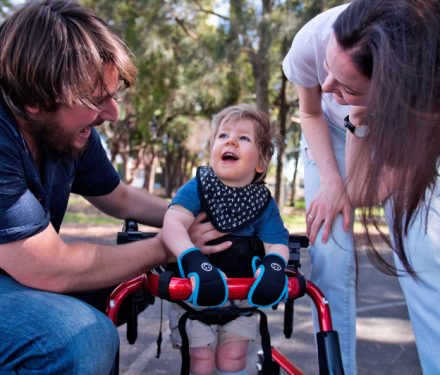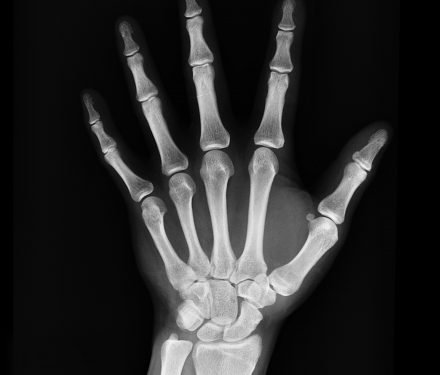Muscle mass crucial to preventing bone fractures in young people with cerebral palsy
Maintaining muscle mass is crucial for good bone health in young adults with cerebral palsy (CP), a new collaborative study by endocrinology researchers at Hudson Institute of Medical Research has found.

The researchers also made the discovery that hypogonadism (a lack of sex steroids, linked to an increased risk of bone fractures) was highly prevalent in young people with CP.
Children and adults with CP have a higher risk of bone fractures than those without CP, owing to factors including limited movement, and the effects of anti-convulsant medication.
“As life expectancies for people with CP grow, bone health and fractures are emerging as key health priorities for clinicians and patients alike,” Lead author of the study, Dr Anne Trinh, a Monash Health endocrinologist who is undertaking her PhD in ‘The Optimisation of Bone Health in Adults with Chronic Neurological Disease’ at Hudson Institute of Medical Research, said.
Cerebral palsy is a physical disability that affects movement and posture. It is caused by damage to the developing fetal or infant brain, and affects 2 to 3.5 per cent of live births.
Up to 77 per cent of children with cerebral palsy have low bone mass and up to 23 per cent have broken a bone.
The study looked at links between low bone density and fractures, by examining the data of 45 young adults with Cerebral Palsy, with an average age of 28, who had undergone bone density scans at Monash Health between 2005 and 2015.
One in five had hypogonadism, or a lack of sex hormones associated with low muscle mass and bone density. Researchers believe this could be due to poor nutrition and chronic illness, or from the initial injury to the brain in people with CP.
Dr Trinh, who is a postgraduate student in Monash University’s Department of Medicine, says these findings could help to tailor treatments to people with cerebral palsy to prevent bone fractures, which can limit mobility and affect quality of life.
“Fractures can have a devastating impact on already reduced mobility in adults with chronic neurological disease such as cerebral palsy,” Dr Trinh said.
“By identifying the importance of muscle and sex steroids in maintaining bone health, treatment can be tailored to reduce fracture risk in these individuals,” she said.
“This study goes some way to illuminating the functional and endocrine factors behind an increased risk of bone fractures.
“We believe that these findings could be important for other young adults with limited mobility or a chronic neurological disability such as spina bifida, spinal cord injury or multiple sclerosis.”
Dr Trinh and her team are now recruiting patients for a clinical trial at Monash Health looking at whether zoledronic acid, normally used to treat osteoporosis, can be used in adults with cerebral palsy.
“The clinical trial is in non-ambulatory adults where improving muscle mass may be difficult to achieve through exercise interventions. This study will look at whether conventional bisphosphonates can be used in this population to improve bone health,” Dr Trinh said.
“Through collaboration with researchers and clinical colleagues, we hope to increase awareness of this important issue to help identify individuals with CP that may be at risk of bone fractures early on.”
This research was carried out through Hudson Institute of Medical Research in collaboration with Department of Medicine Monash University and Departments of Endocrinology, Paediatric Endocrinology, Adult and Paediatric Neurology, Paediatric Rehabilitation at Monash Health.
Dr Trinh was supported by an Osteoporosis Australia/Royal Australasian College of Physicians grant.
Contact us
Hudson Institute communications
t: +61 3 8572 2697
e: communications@hudson.org.au




